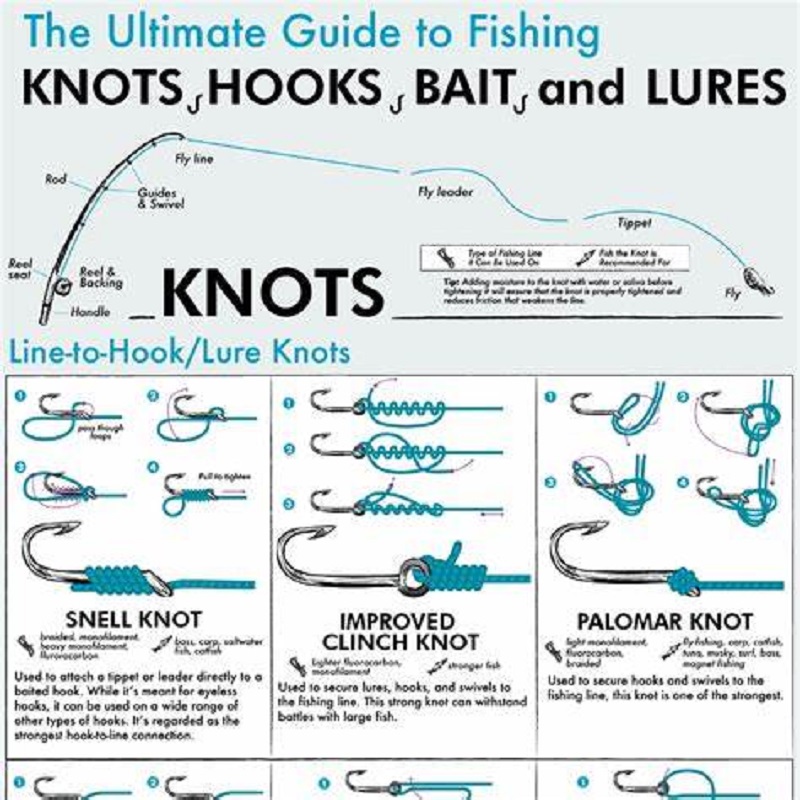Understanding
When it comes to fishing, one of the most critical components to ensure success is not only the equipment you use, but also how you tie your fishing hook knots. To elaborate, fishing hook knots are essential for securing hooks, lures, and other terminal tackle to your line. Additionally, a well-tied knot can significantly improve your chances of landing fish while preventing the loss of your catch due to inadequate knot strength.
In this comprehensive guide, we will cover various types of fishing knots, explain how to tie them effectively, and discuss best practices for tackling the intricacies of knot-tying. By the end of this article, you’ll be equipped with all the necessary knowledge to master fishing knots, ultimately enhancing your fishing experience significantly.
The Importance of Fishing Hook Knots
Understanding the significance of fishing hook knots is essential for every angler, whether you are a novice or a seasoned fisherman. First and foremost, let’s explore why these knots matter:
- Strength and Security: The primary function of a fishing knot is to secure your hook or lure firmly. Consequently, a poorly tied knot can slip or break under pressure. This leads to losing your gear and, potentially, the fish.
- Variety in Tackle: Different fishing conditions and species require specific knots. Therefore, learning various knots gives you the flexibility needed to adapt your techniques for different scenarios, whether you’re fishing in freshwater or saltwater.
- Improved Confidence: When you have a solid understanding of how to tie fishing knots correctly, it builds your confidence as an angler. This confidence can translate into improved performance on the water.
- Efficient Casting: Properly tied knots provide you with streamlined connections between your line and tackle, which allows for smoother casts and reduces drag as your bait moves through the water.
With a grasp of these basics, you can begin to explore various fishing hook knots. Thus, enhancing your skills and increasing your chances of success while out fishing.
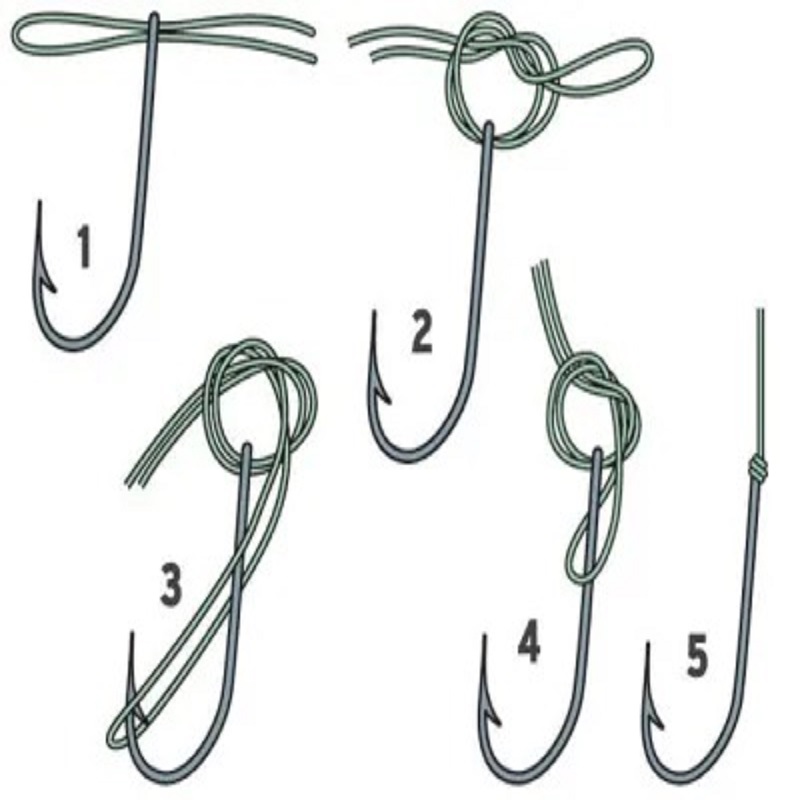
Types of Fishing Hook Knots
There are numerous types of fishing hook knots, each designed for specific purposes and tackle types. Below, we outline some of the most commonly used knots that every angler should know:
1. Improved Clinch Knot
The Improved Clinch Knot is a classic and widely-used knot among anglers, primarily for tying hooks and lures to fishing lines. Here are its key features:
- Strength: This knot is strong, allowing it to withstand significant pulling pressure.
- Ease of Use: Its simple structure makes it easy for beginners to learn and, at the same time, effective for seasoned anglers.
- Versatility: It can be used with both monofilament and braided lines.
How to Tie the Improved Clinch Knot:
- Pass the line through the eye of the hook.
- Wrap the line around itself five to seven times.
- Thread the end of the line back through the small loop next to the hook’s eye.
- Moisten the knot and tighten it carefully by pulling both ends.
- Finally, trim any excess tag.
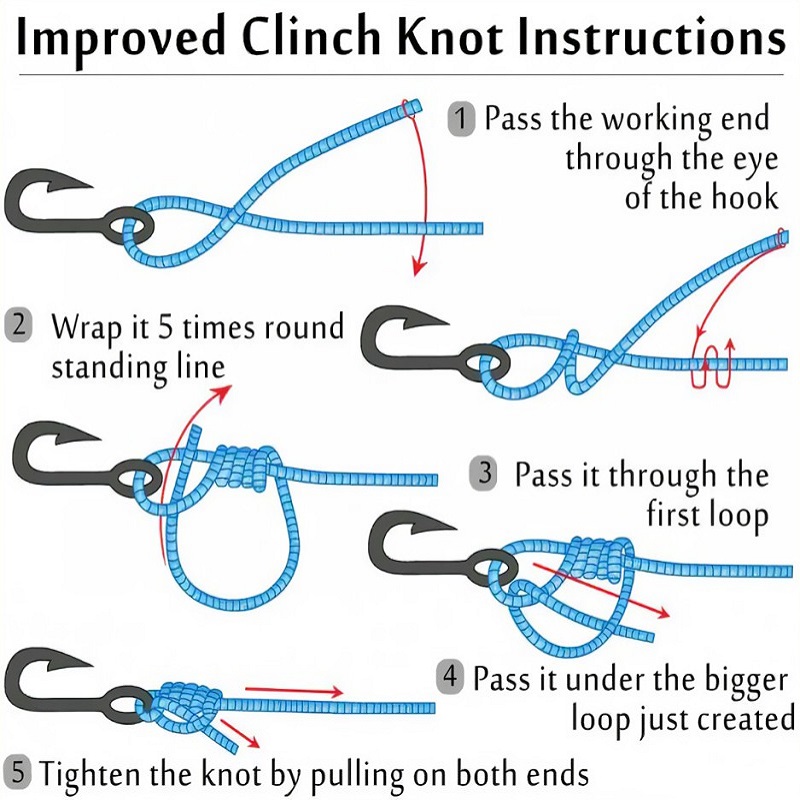
2. Palomar Knot
On the other hand, the Palomar Knot is another excellent choice for securing hooks. It is known for its simplicity and reliability. Thus, here are its characteristics:
- Strength: This knot maintains a high strength-to-weight ratio, making it ideal for heavy-duty use.
- Flexibility: It is effective with both mono and braided lines, providing versatility for various fishing scenarios.
- Easy to Tie: The Palomar is user-friendly and can be tied quickly, which is especially beneficial when fishing with limited time.
How to Tie the Palomar Knot:
- Double the fishing line and pass it through the hook’s eye.
- Tie a simple overhand knot with the doubled line.
- Loop the end back through the hook’s eye.
- Pull the main line to tighten the knot, moisten it, and trim any excess tag.
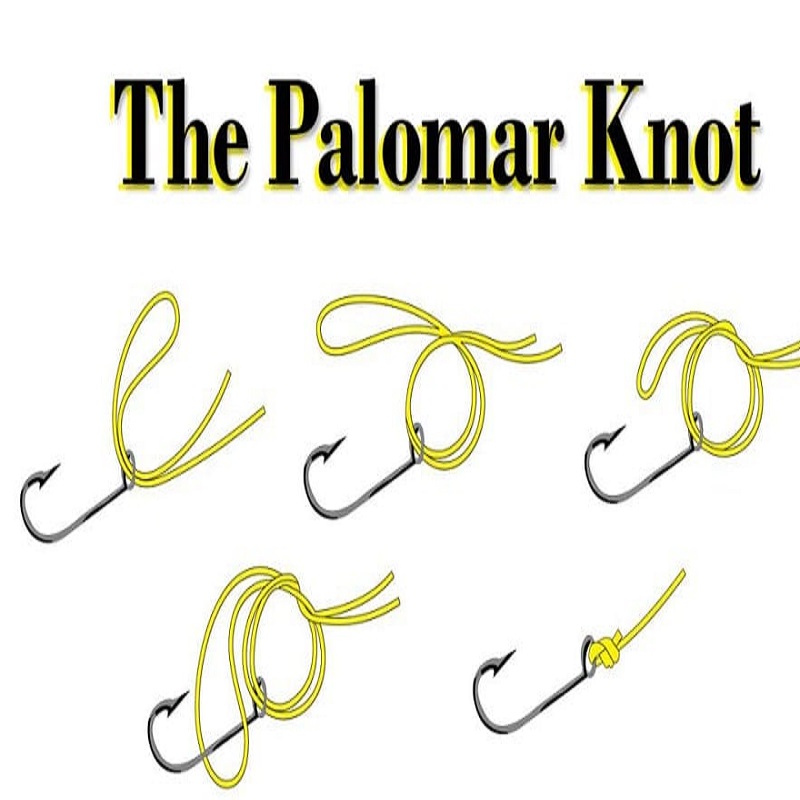
3. Uni Knot
Moreover, the Uni Knot is widely used for securing fishing hooks and lures due to its versatility. Here are some of its benefits:
- Versatility: The Uni Knot is adaptable for various fishing line types and sizes.
- Simple Structure: This knot is relatively easy to learn, making it a common choice for beginners.
- Great for Connecting Lines: The Uni Knot can also be useful for connecting two lines of different diameters.
How to Tie the Uni Knot:
- Create a loop in the line and pass the end through the loop.
- Wrap it around the standing line several times (about six).
- Bring the end back through the loop and pull tight.
- Moisten and then trim the excess tag.
4. Blood Knot
Conversely, the Blood Knot serves primarily for connecting two pieces of line together. Its attributes include:
- Strength: This knot retains impressive strength, making it suitable for heavy lines.
- Smooth Finish: The Blood Knot creates a slim profile that glides through guides smoothly during casting.
- Adapts to Various Lines: It works well with both the same and different line diameters.
How to Tie the Blood Knot:
- Overlap the two lines you want to connect.
- Twist one line around the other five to seven times.
- Pass it back through the loop near the standing line and pull tight.
- Repeat with the other line.
- Moisten and trim as needed.
5. Loop Knot
Additionally, the Loop Knot provides a flexible connection between the line and the hook, making it ideal for lures. Its benefits include:
- Freedom of Movement: The knot allows for greater lure action, as it doesn’t restrict the hook.
- Simplicity: The Loop Knot is relatively easy to tie and can be quickly adjusted in the field.
How to Tie a Loop Knot:
- Create a small loop in the line.
- Wrap the end around itself three to five times.
- Pass it through the loop and pull tight.
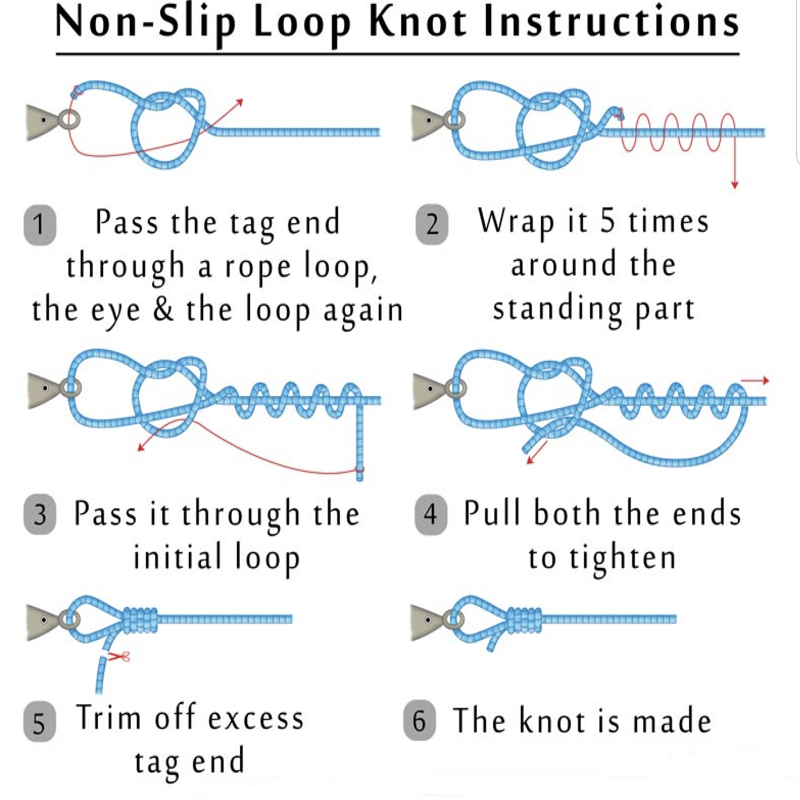
6. Double Surgeon’s Knot
Finally, the Double Surgeon’s Knot is beneficial for making quick and secure connections between two lines, especially in leader setups. Here’s what makes it advantageous:
- Ease of Use: It’s simple and quick to tie, which makes it effective for attaching lines in a hurry.
- Reliability: This knot provides a strong connection even when using different line diameters.
How to Tie the Double Surgeon’s Knot:
- Lay the two lines parallel and overlap them.
- Make a loop with one line and wrap it around the other line two times.
- Pass the end through the loop and pull it tight.
- Repeat the steps with the other line to create a secure connection.
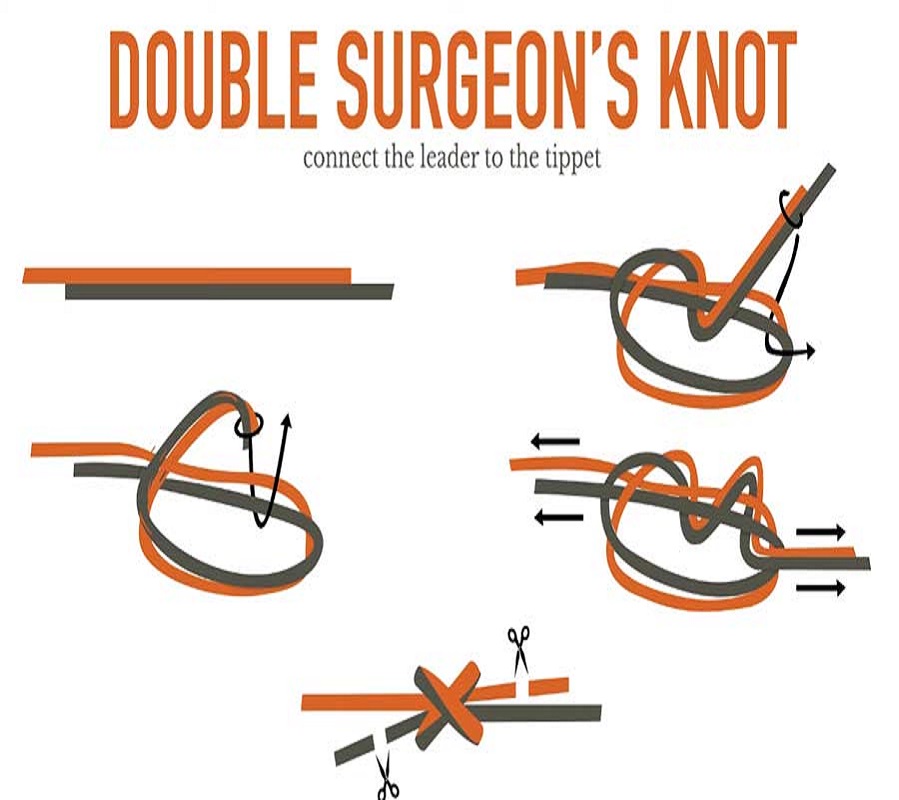
Tips for Tying Fishing Knots
As you work on honing your fishing hook knot skills, here are some valuable tips to keep in mind:
- Moisten the Knot: Always moisten your knot with water or saliva before tightening it. This reduces friction and increases knot strength, allowing for a more secure hold.
- Practice Makes Perfect: Take the time to practice tying knots at home before heading out to fish. When you know your knots confidently, you will save time and headaches on the water.
- Use the Right Line: Ensure you’re using the appropriate fishing line for each knot. Different lines may have different characteristics that can affect knot performance, thus enhancing your fishing efficiency.
- Check Your Knots Regularly: Prior to each fishing trip, check your knots for any signs of wear or damage, especially if they’ve been under tension or used during previous outings.
- Know When to Retie: If you find yourself losing fish or tackle, don’t hesitate to retie your knots for better security. This practice is vital to ensure your setup remains dependable.
By following these tips, you will undoubtedly improve your knot-tying abilities while simultaneously increasing your chances of landing more fish during your fishing excursions.
Common Mistakes to Avoid
Although tying fishing knots is generally straightforward, some common pitfalls can lead to frustration and lost catches. Here are mistakes to avoid:
- Skipping Moisture: Failing to moisten the knot can lead to unnecessary friction, weakening the knot’s integrity and increasing the risk of slippage when under pressure.
- Using the Wrong Knot: Different fishing scenarios may call for specific knots. Failing to use the appropriate knot for the line and situation can lead to failure and lost catches.
- Not Inspecting Knots: Regularly check your knots before fishing, as loose or wet knots can slip, causing you to lose your line or tackle.
- Cramming Multiple Knots Together: Avoid trying to fit multiple knots into a small space on your tackle, as this can lead to tangles and knots that can slip or stretch, resulting in lost catches.
By being vigilant and aware of these common mistakes, you will improve your overall success when it comes to fishing knots.
Conclusion: Mastering Fishing Hook Knots
In conclusion, understanding and mastering fishing hook knots is essential for every angler. Each knot serves its purpose and contributes to the effectiveness of your fishing strategy. Learning how to tie various knots, such as the Improved Clinch Knot, Palomar Knot, Uni Knot, and others, will significantly enhance your chances of landing that prized catch.
As you continue to practice knot-tying techniques, remember the importance of using the proper knot for each fishing scenario. Consequently, consistently tying secure and effective knots leads to increased fishing success while making your time on the water more enjoyable. Embrace the art of knot-tying and watch your confidence as an angler grow!
Ultimately, investing time in learning and perfecting fishing hook knots pays off tremendously. Not only does it reduce frustration, but it also enhances your overall experience and connection to the sport. Be proactive, practice these knots, and enjoy your time fishing!
